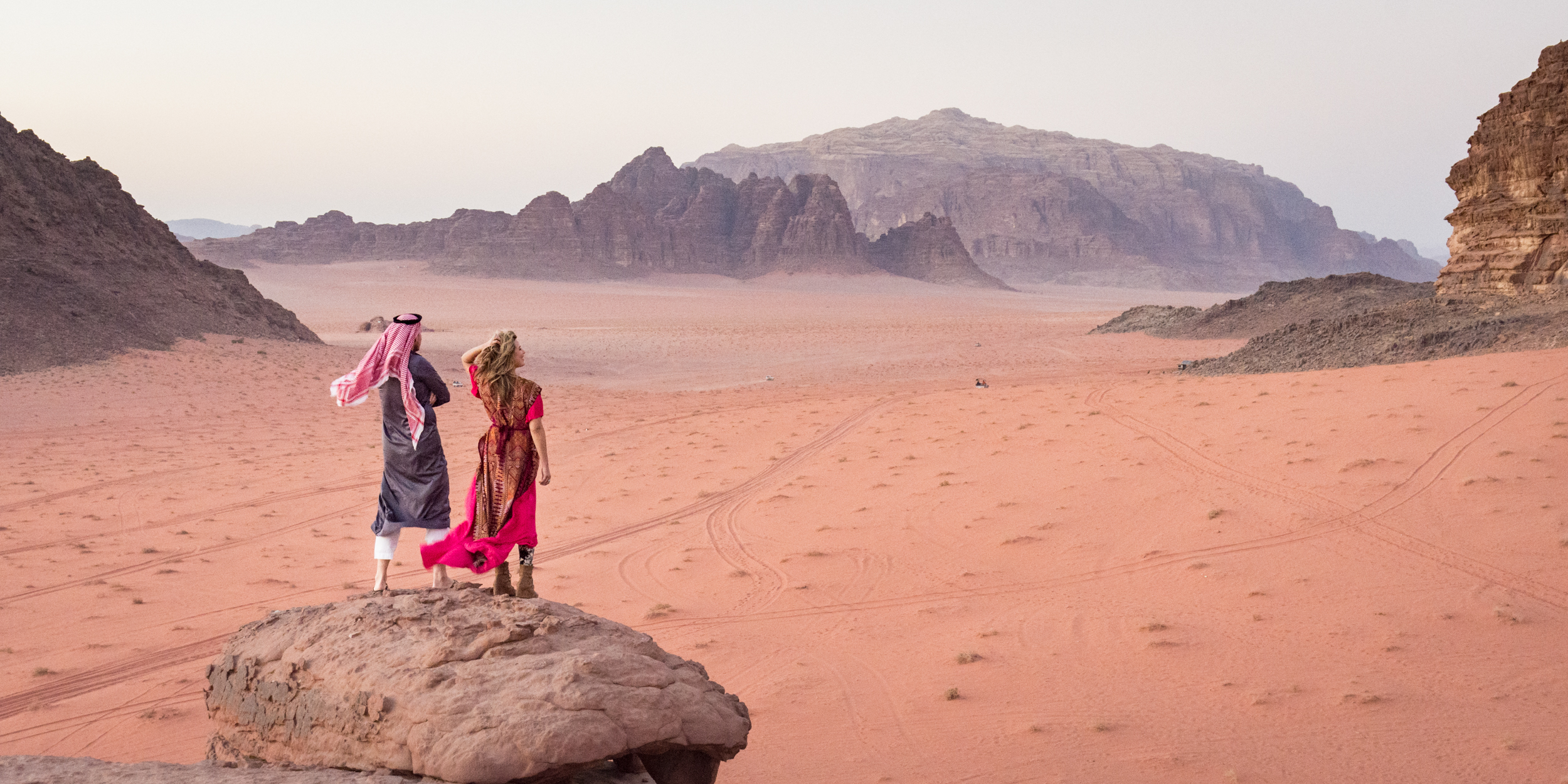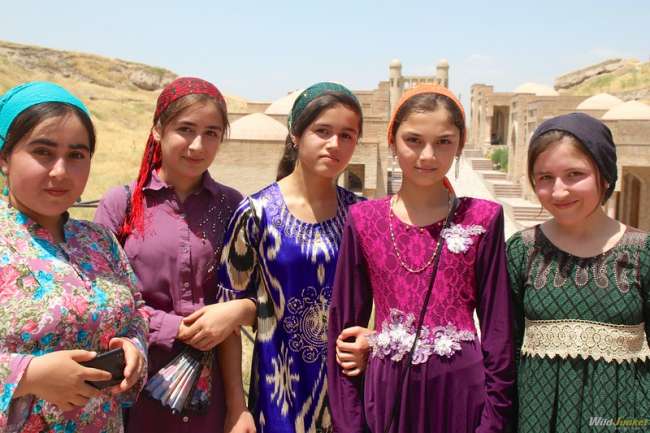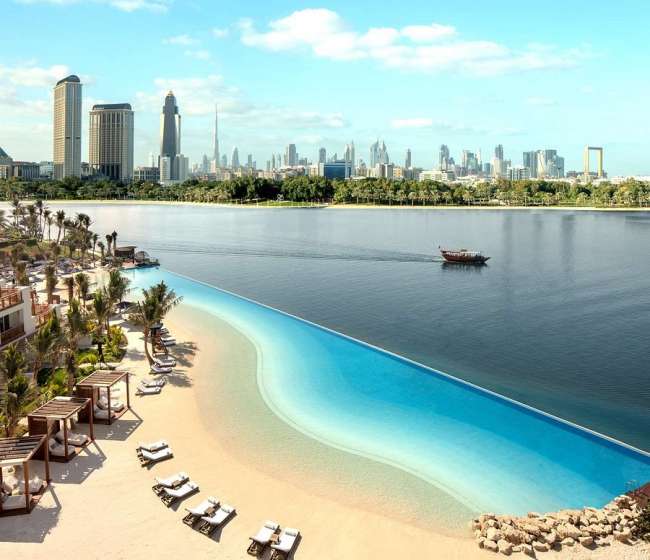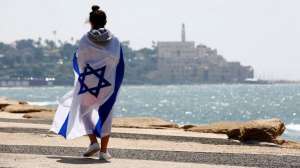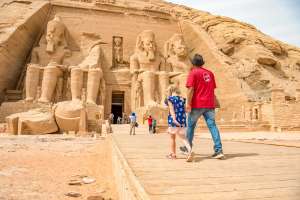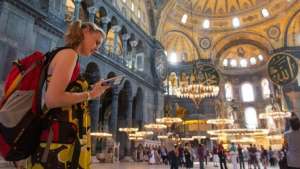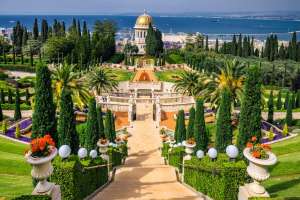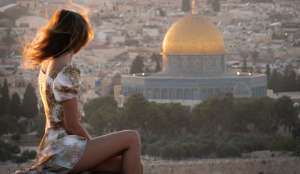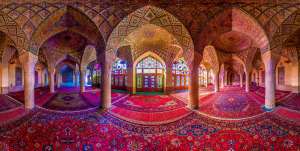Jordan is a land that lingers in the imagination long before you set foot on its soil. Though it often remains under the radar of mainstream travel, those who do visit soon realize it holds some of the world’s most breathtaking wonders. From the crimson dunes of Wadi Rum to the sculpted cliffs of Petra and the haunting grandeur of Jerash, every corner of Jordan tells a story carved by time, faith, and resilience.
Travelers are often astonished by the variety this small kingdom offers. One moment you’re standing on a windswept mountain looking down upon the Dead Sea, and the next you’re tracing ancient mosaics in Madaba or wandering through vibrant markets in Amman. Jordan feels timeless, yet alive — where modern life blends with millennia of history.
This carefully arranged guide offers a detailed yet readable list of Jordan’s most fascinating destinations. It’s designed to help you plan without overwhelm — giving you just the right amount of context, background, and inspiration to craft your journey through one of the Middle East’s most hospitable nations.
The following best places to visit in Jordan reveal why travelers from every corner of the globe continue to be drawn to this kingdom of contrasts and beauty.
If you’ve made it this far, chances are Jordan has already started to capture your curiosity — and it’s easy to see why.
1. Amman – The Capital Where Past and Present Collide
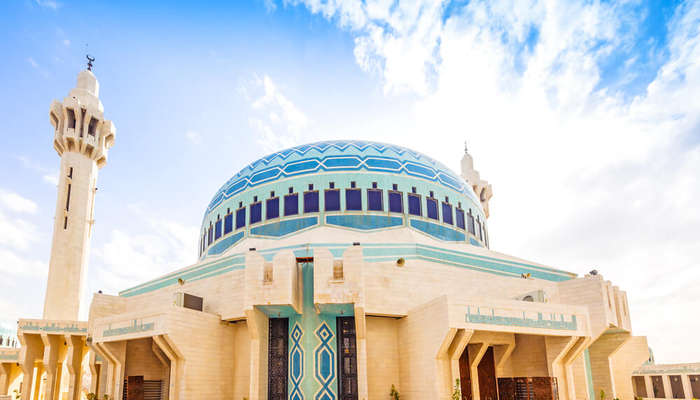
Amman, the capital and largest city of Jordan, stands as a lively crossroads where ancient tradition meets modern ambition. This bustling metropolis effortlessly balances gleaming skyscrapers and lively shopping malls with centuries-old citadels, Roman relics, and traditional souks. It’s one of those rare cities that manages to look both forward and backward at once — an urban blend that mirrors Jordan itself.
Travelers who wander through Amman discover a city layered with surprises. History buffs can walk through the grand Roman Amphitheater, still echoing with the sound of ancient performances, or explore the Amman Citadel, perched high above the city with sweeping views and ruins dating back to the Bronze Age. Those curious about culture can stroll through the galleries of Jabal Amman, or visit the Jordan Museum to gain a deeper understanding of the country’s past.
But Amman isn’t just about ruins and relics — it’s also a city that thrives after sunset. The district of Abdoun offers a buzzing nightlife scene with rooftop lounges, chic cafés, and live music venues. Meanwhile, the city’s souks — especially those in Downtown Amman — invite visitors to lose themselves in the fragrance of spices, the glitter of handcrafted jewelry, and the warmth of everyday conversation.
For a more relaxed experience, find a terrace café overlooking the city and watch the skyline bathed in gold as the sun dips below the horizon. And don’t leave without exploring the open-air markets, where you can bargain for Jordanian carpets, ceramics, and embroidered fabrics — each piece a reflection of the country’s artistry and soul.
2. Mount Nebo – Sacred Heights and Majestic Valleys

Mount Nebo isn’t just a mountain; it’s a sacred landmark steeped in centuries of reverence and legend. According to tradition, this is the place where the prophet Moses viewed the Promised Land before his death — and where he is believed to have been laid to rest. For that reason, Mount Nebo has drawn pilgrims since the early days of Christianity and remains one of the most meaningful religious destinations in the Middle East.
The summit offers one of Jordan’s most extraordinary panoramic views, stretching across the Jordan Valley to the Dead Sea and, on clear days, even reaching the distant hills of Jerusalem. The feeling atop this mountain is indescribable — both peaceful and humbling, as if time itself slows in recognition of its spiritual gravity.
Visitors can explore the Memorial of Moses, which preserves intricate Byzantine mosaics and stone carvings depicting pastoral scenes and biblical figures. Just a short distance away lies Mukawir (Machaerus), another dramatic hilltop fortress associated with the story of John the Baptist. Its windswept ruins and commanding views make it one of the region’s most photogenic sites.
How to Reach Mount Nebo and Mukawir
Mount Nebo lies about 37 kilometers from Amman and roughly 10 kilometers from the city of Madaba. The most practical way to reach it is by private or shared taxi, as public transportation between Amman and Mount Nebo is rare. Many visitors combine this trip with a visit to Madaba’s ancient mosaics, making for a rewarding day excursion.
Distance from Amman: 37 km
3. Jerash – Where Roman Grandeur Still Stands
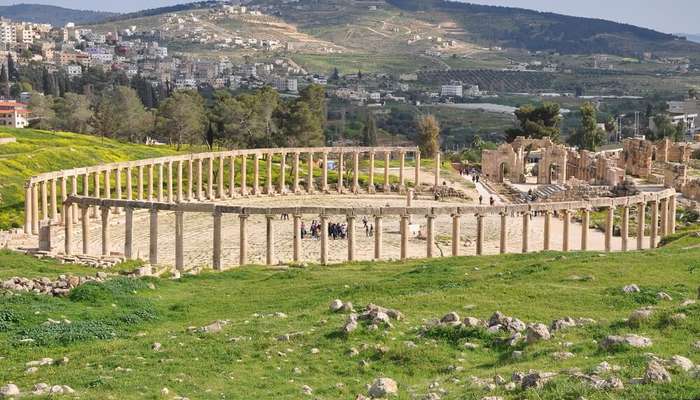
North of Amman lies Jerash, known in antiquity as Gerasa — one of the most remarkably preserved Greco-Roman cities in the world. Walking through Jerash feels like stepping directly into the pages of history: colonnaded streets, towering gateways, oval plazas, and remnants of amphitheaters stand almost intact, whispering of the city’s glorious past.
Among all the best places to visit in Jordan, Jerash appeals particularly to lovers of archaeology and architecture. Once part of the Roman Decapolis, this ancient city prospered through trade and agriculture, leaving behind one of the most impressive urban ruins outside Italy itself. As you wander past the Hadrian’s Arch, the Oval Forum, and the grand Temple of Artemis, it’s easy to imagine the bustle of Roman life that once filled these streets.
Jerash is surrounded by gently rolling hills dotted with olive groves, plum orchards, and pine trees — a landscape that softens the grandeur of its stone monuments. The combination of natural beauty and historical preservation makes it a favorite among day-trippers from Amman.
How to Reach Jerash from Amman
The most convenient option is to hire a private vehicle from Amman directly to Jerash, ensuring comfort and flexibility. Alternatively, travelers can take a yellow taxi to the Amman North Terminal Bus Station and catch a local bus heading to Jerash Bus Station. The journey costs around 2 Jordanian Dinars per person and offers a glimpse into everyday local life.
Distance from Amman: 55 km
4. Bethany Beyond the Jordan – The Place of Baptism
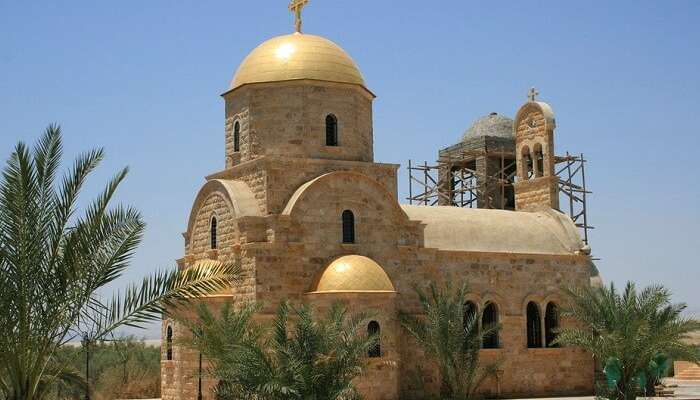
On the eastern banks of the Jordan River lies Bethany Beyond the Jordan, also known as Al-Maghtas, one of the most sacred sites in Christianity. It is believed to be the exact spot where John the Baptist baptized Jesus Christ, an event that forever shaped religious history.
The site is divided into two main areas — Tell Al-Kharrar (Elijah’s Hill) and the cluster of Saint John the Baptist churches near the river itself. The tranquility here is striking; as you stand by the reeds and waters, you can almost sense the weight of centuries of faith. Pilgrims from all over the world continue to visit, making it a living place of devotion rather than a relic of the past.
Archaeological discoveries have revealed ancient baptismal pools, mosaic church floors, and stone steps descending directly into the river — all silent witnesses to centuries of worship. Whether you come for religious reasons or simply to understand the cultural depth of Jordan, Bethany Beyond the Jordan is an experience that resonates deeply.
Distance from Amman: 55 km
5. Dead Sea – Floating Between Earth and Sky
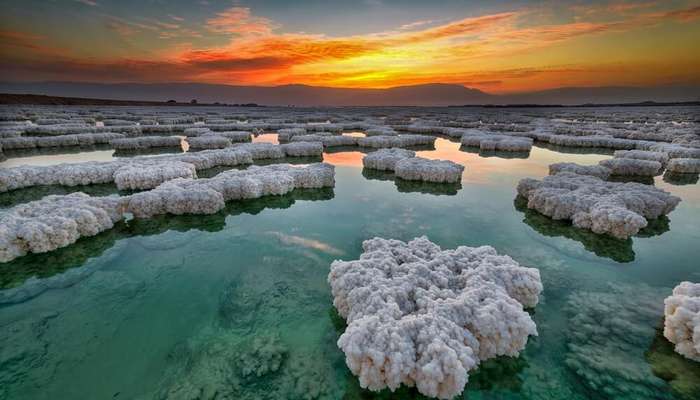
The Dead Sea, located at the lowest point on Earth, is one of Jordan’s natural wonders — and one of the most surreal landscapes anywhere in the world. Despite its name, this body of water teems with a kind of life that goes beyond biology: it’s a place of stillness, reflection, and rejuvenation.
The lake’s high salt concentration allows you to float effortlessly, an experience that never ceases to amaze even seasoned travelers. The turquoise and emerald hues of its surface shimmer beneath the desert sun, while the mineral-rich mud along its shores is prized for its healing and skin-restorative properties. Many resorts along the coast offer luxurious spa treatments that utilize this natural resource.
However, the Dead Sea faces an environmental crisis — its water level has been receding by nearly a meter each year due to industrial and agricultural use upstream. Scientists warn that if this trend continues, the Dead Sea could vanish within decades. Visiting now isn’t just a leisure activity; it’s an opportunity to witness one of Earth’s geological marvels before it changes forever.
Quick tips: There is no public transportation that goes directly to the Dead Sea. The best option is to hire a taxi or rent a private car for the journey.
Distance from Amman: 60 km
6. Umm Qais – Ancient Gadara and the Green Hills of the North

Perched gracefully in northern Jordan, Umm Qais, once known as Gadara, feels like a world apart from the dry landscapes that dominate much of the country. Here, the air is cooler, the fields greener, and the silence deep enough to hear the whisper of history across the hills. Often called Jordan’s green town, Umm Qais offers sweeping views over the Golan Heights, Lake Tiberias, and the Yarmouk River Valley, blending natural beauty with profound historical significance.
In antiquity, Gadara was a prominent city of the Decapolis, a federation of Hellenistic cities that flourished under Roman rule. Today, its ruins stretch across the hilltops — basalt theaters, colonnaded streets, and fragments of Byzantine churches, all softened by wildflowers in spring. As you walk through the remnants of this ancient city, you can feel how it once stood as a cultural and intellectual hub, attracting poets, philosophers, and artists.
Travelers who stay until dusk often witness one of the most serene sunsets in Jordan, when the sky burns orange and violet over the distant mountains. It’s a sight that captures both the grandeur of the past and the quiet soul of the present-day countryside.
How to Reach Umm Qais from Amman
From Amman, take a taxi to the North Terminal Bus Station and catch a local bus to Irbid. From Irbid, shared minivans make the final journey to Umm Qais. Though the route requires transfers, it’s a scenic ride through northern Jordan’s rolling hills.
Distance from Amman: 125 km
7. Dana Biosphere Reserve – Nature’s Masterpiece of Jordan
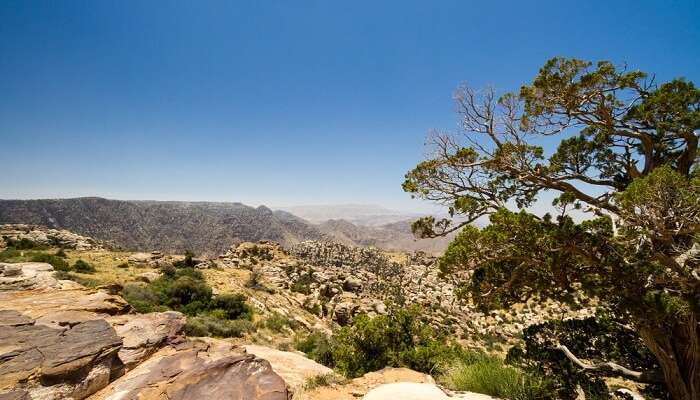
The Dana Biosphere Reserve is a realm where nature reigns in its purest form — an extraordinary mosaic of landscapes stretching from rugged mountains to golden desert plains. It’s Jordan’s largest nature reserve and a dream destination for hikers, photographers, and anyone seeking peace in the wild.
This remarkable reserve covers over 300 square kilometers and transitions dramatically from sandstone cliffs to limestone valleys. Within these zones thrive ecosystems ranging from oak and juniper forests to windswept plateaus. Dana is also home to several endangered species such as the Sand Cat, the elusive Syrian Wolf, and the spiny-tailed lizard, which have found sanctuary within its boundaries.
The reserve’s timeless charm is felt most deeply in the village of Dana, where stone houses cling to the mountainside overlooking vast canyons. Local lodges and eco-camps offer experiences that mix simplicity with comfort — you can join guided hikes, take part in cooking lessons with villagers, or gaze up at constellations in one of Jordan’s clearest night skies.
Dana’s beauty is not just visual but emotional — a rare place where the silence of nature seems to tell its own story. Whether you come for adventure or tranquility, it remains one of Jordan’s most soul-stirring destinations.
Distance from Amman: 190 km
8. Petra – The Timeless Rose City

No list of Jordan’s wonders is complete without Petra, the ancient city carved into rose-red cliffs and crowned as one of the New Seven Wonders of the World. For centuries, Petra was hidden from the outside world, known only to the Bedouins who roamed its valleys. When rediscovered by Swiss explorer Johann Ludwig Burckhardt in 1812, it captured global fascination — and it hasn’t let go since.
Founded by the Nabataeans around the 4th century B.C., Petra was once a bustling trade capital linking Arabia, Egypt, and the Mediterranean. Its monumental tombs, temples, and facades were carved directly from sandstone, glowing pink and orange as the light changes throughout the day.
Visitors enter through the Siq, a narrow, winding gorge flanked by towering cliffs over a kilometer long. At its end, the passage opens dramatically to reveal Al-Khazneh (The Treasury) — Petra’s most iconic sight. Measuring 30 meters wide and 43 meters high, the Treasury’s intricate carvings blend Nabataean and Hellenistic styles, a stunning example of ancient artistry.
Beyond Al-Khazneh lies a vast archaeological city waiting to be explored: the Royal Tombs, the Great Temple, the Colonnaded Street, and the massive Monastery (Ad Deir), which requires a climb of nearly 800 steps but rewards visitors with an unforgettable panorama.
Petra is a place that transforms with every hour — radiant at dawn, golden at midday, and ethereal under moonlight. It’s not just a site to see, but an experience that leaves you changed.
Opening hours: 6:00 a.m.–6:00 p.m. (summer), 6:00 a.m.–4:00 p.m. (winter), open daily
Entry fee:
-
1-Day Visitor: 90 JD
-
Overnight visitor (1-day pass): 50 JD
-
2-day pass: 55 JD
-
3-day pass: 60 JD
-
Children under 12: Free
-
Locals, residents, students: 1 JD
Visitors must stay at least one night in Petra to qualify for the reduced overnight entry rates.
How to Reach Petra from Amman
The Jett Bus offers the most convenient and affordable transport option. From Amman’s Jett station, a daily bus departs at 6:30 a.m. for Wadi Musa (Petra’s gateway town). Tickets cost about 10 JD per person. Private taxis are also available for more flexible travel.
Quick tip: Petra is vast — exploring it properly requires at least two days. Opt for a 2-day pass to save money and ensure you experience its many trails and viewpoints at a relaxed pace.
Distance from Amman: 235 km
9. Aqaba – The Coastal Escape on the Red Sea

Situated at Jordan’s southernmost tip, Aqaba offers a refreshing change from the desert and mountains of the north. This coastal city on the Gulf of Aqaba blends beach relaxation with vibrant city life, all set against the backdrop of rugged mountains and crystalline waters.
Aqaba is Jordan’s only seaside destination and a beloved retreat for locals and travelers alike. The city’s charm lies in its combination of history, marine beauty, and modern leisure. You can explore the Aqaba Fort, stroll through the bustling markets, or unwind on sandy beaches overlooking Israel and Egypt across the gulf.
Beneath the surface, Aqaba’s underwater world steals the spotlight. The Red Sea coral reefs here are among the most accessible and colorful in the region, perfect for snorkeling or scuba diving. Even beginners can marvel at schools of tropical fish weaving through sunlit coral gardens just meters offshore.
When the day fades, Aqaba comes alive with music, street food, and the scent of grilled seafood drifting through the evening air. Whether you’re a diver, a sunseeker, or someone looking to enjoy Jordan’s more leisurely side, Aqaba promises a memorable contrast to the desert landscapes beyond.
How to Reach Aqaba from Amman
Two companies — Jett and Trust — operate comfortable, air-conditioned buses daily between Amman and Aqaba. The trip covers around 285 kilometers and takes roughly four hours, offering scenic glimpses of Jordan’s arid heartland along the way.
Distance from Amman: 285 km
10. Wadi Rum – The Desert of Dreams
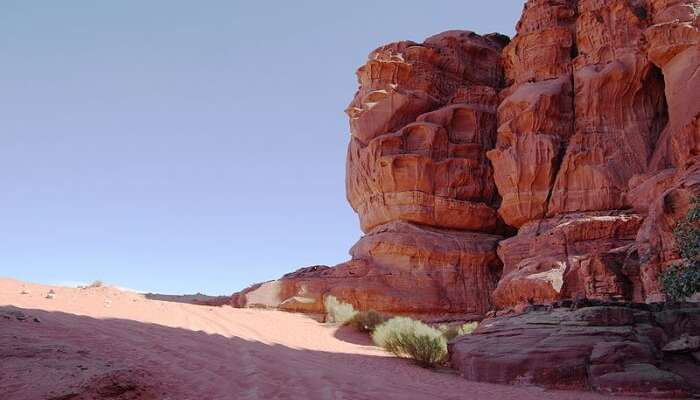
Known locally as The Valley of the Moon, Wadi Rum is Jordan’s most otherworldly landscape — a vast desert wilderness of sandstone cliffs, crimson dunes, and echoing silence. Covering more than 74,000 hectares, it has long captured the imagination of travelers, filmmakers, and dreamers.
Here, the desert feels alive. The rock formations rise like giant sculptures, shaped by wind and time. You can explore ancient petroglyphs, hike narrow canyons, or ride across the sands in a 4x4 with Bedouin guides who know every dune and shadow. Many visitors choose to stay overnight in traditional Bedouin tents, where campfires, star-filled skies, and the aroma of sweet tea create a kind of magic no hotel could replicate.
Wadi Rum’s landscapes are so cinematic that it has doubled for Mars in films like The Martian and Dune. Yet beyond its fame lies a humbling beauty — a reminder of how nature can be both harsh and deeply poetic. Watching the sunrise here, as the desert glows from violet to red to gold, is an experience that lingers long after you leave.
How to Reach Wadi Rum
Tourist buses from Petra to Wadi Rum cost around 5 JD per person and depart early morning from Wadi Musa. Alternatively, a private taxi ride will cost about 40 JD. Many hotels can arrange transport directly, often as part of an overnight tour package.
Distance from Amman: 315 km
11. Mujib Nature Reserve – A Playground for Adventure Seekers
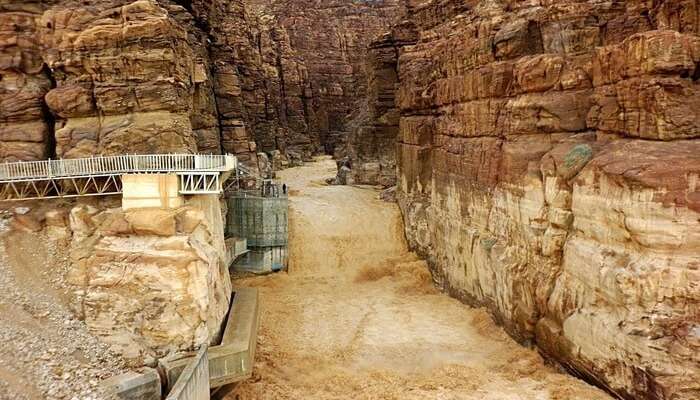
The Mujib Nature Reserve, sometimes called Jordan’s “Grand Canyon,” is one of the country’s most thrilling natural escapes. Located near the eastern shores of the Dead Sea, it plunges deep through rugged sandstone cliffs and narrow gorges, gradually descending into the salt-rich waters below. This remarkable reserve holds the title of being the lowest nature reserve on Earth, lying about 410 meters below sea level.
Mujib’s dramatic terrain is carved by centuries of flowing water, leaving behind twisting canyons, cascading waterfalls, and hidden pools. For outdoor enthusiasts, this is Jordan’s ultimate adventure zone. You can hike through water-filled wadis, rappel down rock faces, or swim through emerald pools surrounded by vertical walls of red stone. The Siq Trail is particularly famous, combining canyoning and swimming in a journey that feels both exhilarating and otherworldly.
Aside from its adrenaline-filled activities, Mujib is also a sanctuary for wildlife. Ibex, hyraxes, and a variety of bird species make their home among the cliffs and valleys. When the sunlight hits the canyon walls and the air hums with the sound of running water, it becomes easy to see why so many describe this reserve as one of Jordan’s most breathtaking destinations.
For those seeking a mix of nature, adventure, and serenity, Mujib offers all three — a natural amphitheater where thrill meets tranquility.
Distance from Amman: 90 km
12. Madaba – The Mosaic City of Faith and Art

Known as the City of Mosaics, Madaba is one of Jordan’s most spiritually and artistically significant towns. Located along the historic King’s Highway, this charming city is a treasure chest of ancient craftsmanship and religious heritage. Its unhurried pace and friendly locals make it a welcoming stop for travelers exploring central Jordan.
Madaba’s most renowned masterpiece lies inside St. George’s Church — the famous Madaba Map, a detailed 6th-century mosaic depicting the Holy Land. With more than two million colored stones forming rivers, cities, and landmarks, it remains one of the oldest surviving cartographic representations in the world.
Beyond the church, Madaba invites visitors to explore winding streets dotted with workshops, art galleries, and small cafés. You’ll find artisans still crafting mosaics by hand, preserving the very tradition that made their town famous. Not far away, the gold-domed mosques and slender minarets rise gracefully above the skyline, symbolizing the town’s long coexistence of faiths.
The combination of Byzantine churches, Ottoman houses, and Roman ruins gives Madaba an atmosphere unlike any other — both historic and intimate. Visitors often linger here longer than planned, drawn in by its calm charm and the stories whispered through every tile.
Distance from Amman: 32 km
13. Ajloun – The Road Less Traveled

Nestled among the lush northern hills, Ajloun (sometimes spelled Aljoun) remains one of Jordan’s most underappreciated gems. With its cool climate, pine forests, and centuries-old stone villages, Ajloun offers a refreshing escape from the desert heat. The town is best known for the imposing Ajloun Castle, a 12th-century fortress that stands proudly atop Mount Ajloun.
Built by the forces of Salah ad-Din (Saladin) to defend against Crusader invasions, the castle offers sweeping views over the Jordan Valley and beyond. Exploring its passageways and towers is like stepping into a living history book — a place where the sound of footsteps echoes against thick limestone walls once used by soldiers centuries ago.
But Ajloun is more than just its castle. The surrounding countryside is dotted with tiny villages, olive groves, and ancient ruins connected by walking trails. The Ajloun Forest Reserve, managed by the Royal Society for the Conservation of Nature, is home to foxes, wild boars, and countless birds. For hikers, nature photographers, and those seeking peaceful landscapes, this region represents the quieter, greener side of Jordan.
Ajloun may not be crowded with tourists, but that’s part of its charm — it’s a destination for those who enjoy wandering roads that few others take.
Distance from Amman: 71 km
14. Irbid – The Academic and Cultural Heart of the North
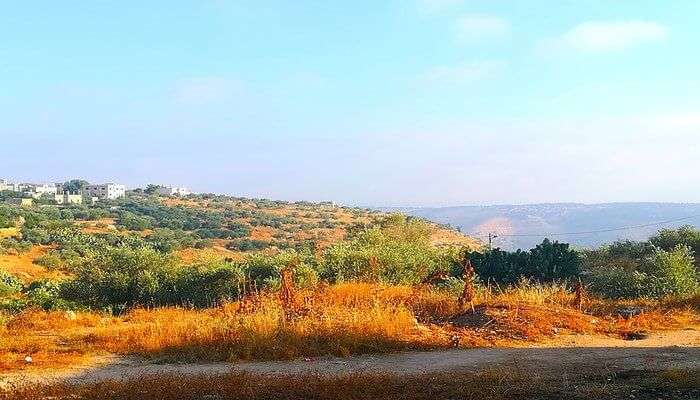
Known as Jordan’s educational hub, Irbid is a lively, youthful city that buzzes with the energy of its universities, particularly Yarmouk University, one of the country’s most prestigious institutions. This influx of students has given Irbid a dynamic atmosphere filled with cafés, bookstores, art exhibitions, and cultural festivals.
Despite its modern feel, Irbid also preserves layers of ancient history. Archaeological finds suggest that this area has been inhabited for thousands of years, and its Archaeological Museum houses artifacts from the Paleolithic to Islamic eras. The mix of old and new here reflects Jordan’s broader character — rooted in history, yet constantly evolving.
The city’s markets are a delight for those seeking local life. From fragrant spice stalls to traditional sweets and lively coffee houses, Irbid’s streets pulse with authenticity. It’s also an excellent base for exploring nearby attractions like Umm Qais or the Yarmouk Nature Reserve.
For travelers interested in local culture rather than tourist crowds, Irbid offers a glimpse of everyday Jordanian life — progressive, warm, and grounded in tradition.
Distance from Amman: 90 km
15. Zarqa – The Industrial Soul with a Local Heart
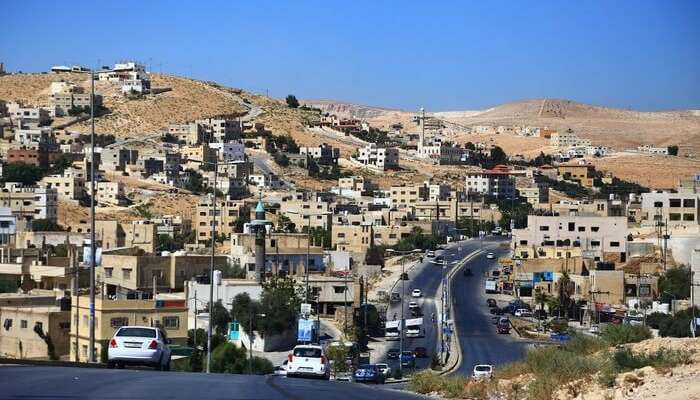
Located just northeast of Amman, Zarqa might not feature ancient ruins or ornate landmarks, but it represents the beating heart of modern Jordanian industry and daily life. As the country’s third-largest city, Zarqa is often described as “real Jordan” — a place where the nation’s working-class energy thrives amidst bustling streets and colorful bazaars.
The city’s name, meaning “blue,” refers to the bluish tint of the nearby river. While Zarqa’s charm doesn’t come from monumental history, it lies in its raw, unpolished character. Wander through its crowded souks, where the smell of fresh bread, roasted nuts, and sweet tea fills the air, and you’ll encounter a version of Jordan that’s entirely genuine.
Zarqa also offers a glimpse into the country’s more contemporary identity, balancing urban expansion with an enduring sense of community. Locals are proud of their city’s resilience and warmth — qualities that make a visit here both eye-opening and rewarding.
For those seeking a taste of everyday Jordanian life away from polished tourist centers, Zarqa stands as an authentic reminder that beauty often lies in simplicity.
Distance from Amman: 30 km
Frequently Asked Questions About the Best Places to Visit in Jordan
What should travelers wear in Jordan?
Women typically wear modest clothing such as jeans, cardigans, scarves, or long-sleeved tops that cover the arms and chest. Men can comfortably wear jeans, chinos, T-shirts, or jackets. Dressing respectfully is appreciated throughout the country, especially in rural areas and religious sites.
Is alcohol allowed in Jordan?
Yes. Despite being a Muslim-majority country, alcohol is available in hotels, restaurants, and bars. It’s not considered taboo, though drinking in public spaces outside licensed areas is discouraged.
What kind of food can you expect in Jordan?
Jordanian cuisine is a delicious reflection of Middle Eastern and Mediterranean flavors. Popular dishes include falafel, hummus, labneh, mansaf (the national dish made with lamb and yogurt sauce), moutabel, and freshly baked khubz bread. Street food culture is vibrant, and sharing meals is a beloved tradition.
Jordan, with its timeless landscapes, sacred sites, and welcoming spirit, remains one of the most captivating destinations in the world. From ancient ruins and mystical deserts to mountain reserves and coastal havens, each place in this kingdom offers a new perspective — one that invites both wonder and understanding. To travel through Jordan is to step into a story that’s been unfolding for thousands of years — and still continues today.


